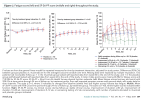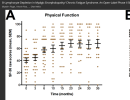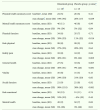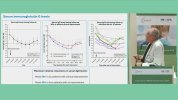John Mac
Senior Member (Voting Rights)
Frontiers | Plasma cell targeting with the anti-CD38 antibody daratumumab in myalgic encephalomyelitis/chronic fatigue syndrome (ME/CFS) -a clinical pilot study
Background: Myalgic Encephalomyelitis/Chronic Fatigue Syndrome (ME/CFS) entails low quality of life for patients and massive societal costs. There is an urge...
Background: Myalgic Encephalomyelitis/Chronic Fatigue Syndrome (ME/CFS) entails low quality of life for patients and massive societal costs. There is an urgent need for elucidation of disease mechanisms and for rational treatment. Our working hypothesis is that ME/CFS in a subgroup of patients is associated with functional autoantibodies emerging after an infection, and that plasma-cell depletion with transient reductions in serum immunoglobulins will have a beneficial effect on symptoms.
Objective: To evaluate feasibility and toxicity of plasma-cell targeting treatment using subcutaneous anti-CD38 antibody daratumumab (Darzalex) in moderate to severe ME/CFS, and to assess the clinical course through 12-24 months follow-up.
Methods: We performed an open-label pilot trial (EudraCT 2022-000281-18). Ten female patients were enrolled. Following 12 weeks run-in, six patients received four daratumumab injections. The next four patients received four, followed by three additional injections from week 20.
Results: All planned treatments were administered, and there were no serious adverse events. Four patients had no significant clinical changes. Six patients experienced marked improvement. For all ten patients, mean SF-36 Physical Function (SF-36 PF) increased from 25.9 to 55.0 at eight to nine months (p=0.002). In six responders, mean SF-36 PF increased from 32.2 to 78.3. Five of these had major and sustained improvement with a mean SF-36 PF of 88 (range 80 to 95) toward end of follow-up. Mean steps per 24 hours was 3359 (range 1493 to 6277) at baseline. At eight to nine months, the mean number of steps was 5862, and 7392 in the six responders. All five patients with sustained improvement reached a mean step count above 10000/24h for some weeks, and above 15000 on individual days. Relative reduction of serum IgG levels was 54% in patients with clinical improvement, and 40% in those with no benefit. Low baseline NK-cell count in blood was associated with lack of clinical response.
Conclusion: Subcutaneous daratumumab was well tolerated. In six ME/CFS patients, treatment was associated with clinical improvement and concurrent transient reduction of serum IgG levels, indicating pathomechanistic roles for long-lived plasma cells and functional autoantibodies. No definite conclusions should be drawn before a randomized study has been performed.





